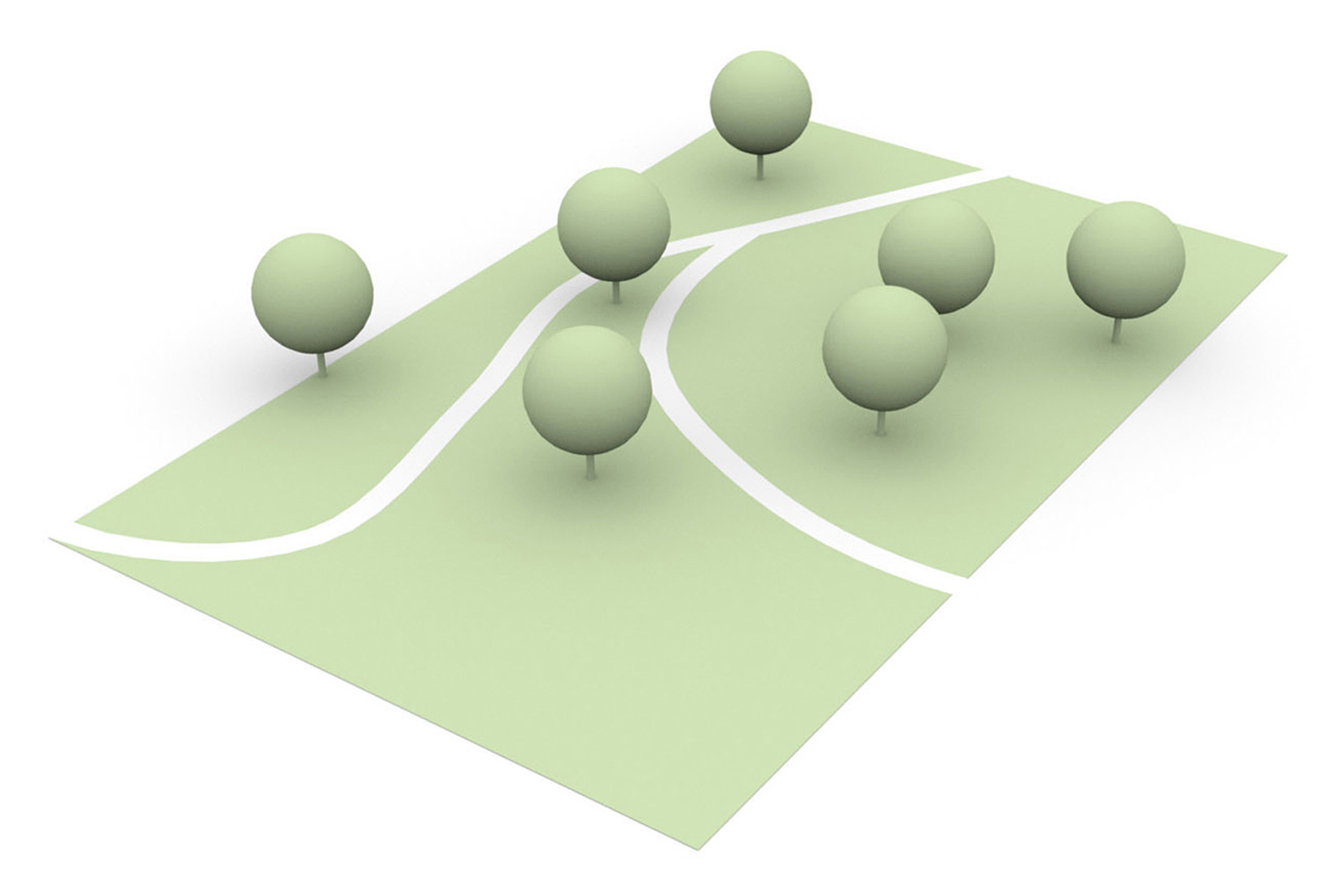Open and civic space

'Open and civic space is a type of Urban object that encompasses the public realm, urban squares and public parks and recreation space. It is a sub category of the urban object type Social facilities, open and civic space
Contents
Description
Open space, for the purposes of urban Securipedia, is broken into the following archtypes:
| Type of open and civic space | Description | Icon |
|---|---|---|
| Public realm | the public realm is defined as public space including streets, pathways, parks, publicly accessible open spaces and any public/civic building and facilities. |  |
| Urban squares | A planned open public space, usually rectangular in shape with clearly defined borders. These locations usually have significant footfall as public meeting places, concerts, markets or public rallies. |  |
| Public parks and recreation space | Recreational space in the urban environment encompasses those areas which are publicly accessible and conducive to citizens refreshing their mind or body through passive or active activity. Recreation space can broadly be grouped as formal (e.g. playing fields, tennis courts, etc), informal (e.g. city parks, linear river walks, incidental open space within residential schemes, etc) and children's playing space (e.g. playgrounds). |  |
Hereinafter, wherever an aspect specific to one of these archetypes is described, the corresponding icon will be displayed.
Functions
Social
Well-designed and maintained open and civic spaces can give an area a sense of identity and character, and provide a focal point for a community. These spaces also act as a forum for community activities. In addition, green open spaces also have environmental benefits, providing a habitat for local wildlife and a natural filter for air pollutants. In particular, open and civic spaces can contribute to increasing resilience and reducing vulnerability of urban communities, by aspects such as the following:
- Contribute to the health and well being of the community – physical and mental health, and quality of life;
- Enhance the public realm;
- Passive and active recreation, including relaxation and children's play;
- Role in reducing crime and vandalism, and in developing stable communities;
- All-inclusive: regardless of age, gender, mobility, ethnic origin or social class;
- Social contact and integration, not least in underprivileged neighbourhoods.
At the same time, open and civic spaces are part of urban infrastructure that can also attract hazard, such as crime, violence, or vandalism. In responding this at the level of urban planning, it is important to consider social mechanisms of risk perception and perceived needs to protect infrastructure, since these may considerably differ from professional risk assessments. Security-related urban planning that addresses open and civic space should therefore include citizen participation-based methods.
Economic
Providing the urban environment with goods and services such as recreation, tourism, cultural inheritage, food, drinking water, and safety against natural threats, open and civic space are major contributors to the public well being. Hence, open and civic space create a positive economic impact such as:
- A positive contribution to property value of land and real estate; e.g. to attract business and industry to a region;
- Avoided costs for public authorities due to the environmental services such as waste water disposal, filtering of drinking water, etc.
- Economic spin-off of recreation and tourism.
- Jobs for the management and the upkeep of the open space.
Moreover, open and civic space can be regarded as a public asset that in time will increase in value, in contrast to many other urban developments. The economic impacts can be estimated with the help of economic tools/techniques. However, some of these benefits are not easy to measure though and one easily double-counts effects.
Most of the security threats are crime related (e.g., vandalism, assault, robbery, etc.). Crime generates costs in anticipation of crime (e.g. locks, surveillance, etc.), as a consequence of crime (loss of property) and in response to crime (police investigation, legal system, etc.). Indirectly, crime has (amongst others) an impact on, for example, the local real estate value in the area around the open and civic space[1].
Security measures have an economic impact (in terms of costs and benefits) which can be considerable. Another way to enhance security is by design, e.g. the designing out approach, or as an aspect of sustainable design, which seeks a balanced consideration of social, economic, cultural and environmental aspects in urban design[2]. In general, these measures demand larger investments than traditional security measures, but at the same time they are able to avoid future costs due to the long-term prevention of crime.
Mobility
Good access (including sufficient parking spaces) encourages use of social facilities. public transport is often encouraged by facilitating with good public transport options.
The scale of open space should be aligned with the level of attraction and accessibility (e.g. a large regional park should be proximate to a major transport interchange to facilitate use and visitation by large numbers).
Recreational open spaces are mostly visited by pedestrians and cyclists. Walking and cycling paths and bicycle parking places should be available in order to facilitate vulnerable road users and direct these flows of people.
The open character of open and civic spaces may prevent crime; cul-de-sacs and roads/paths and parking places near dark corners should be avoided.
Safety
As social facilities will typically involve gatherings of people, they can sometimes be very busy. The ability for the people to get to safety in time in the event of an incident (Evacuation Management) can therefore be an important safety aspect.
Safety in all its forms, is an important function for the perceived quality of these environments. The presence of children in open and civic space further elevate the required safety standards. However well as these environments are designed to provide safety, the safety function can be deteriorated by crime. Examples of crime deteriorating safety are:
- Vandalism: destruction of safety features (such as traffic signs, fencing around dangerous areas or child-safe playgrounds) can lead to dangerous situations and safety hazards.
- Antisocial behaviour can for instance endanger people by generating street litter, such as broken bottles.
- Drug offences can also lead to dangerous litter, such as used needles.
As open and civic space often also provide the function of connecting different parts of the urban area, traffic safety would be relevant.
Security Issues
Crimes most relevant to open and civic space, are:
- Vandalism and Graffiti: These security issues are related to the fact that these facilities are highly publicly accessible and highly visible. Especially at locations where young people gather, this issue is most prominent.
- Pickpocketing can be a problem in locations where people tend to gather and be packed close together, especially when these places are busy and distractive.
- Robbery has a higher rate of occurring in locations like parks, fields and playgrounds[3].
- Antisocial behaviour
Measures
The measures for each type of security issue can be found on the respective pages. There are few measures that are specifically suited or unsuited to this kind of urban object, but some general considerations can be mentioned:
- Ownership is required for the public to be aware of what would and would not be allowed and facilitates them to act accordingly.
- Access control can be used to disallow access to particular (vulnerable) parts of the area or location or at particular times. It can serve to set clear boundaries and establish a sense of ownership.
- Directing traffic flows can be employed to ensure only the expected kind of traffic enters via the entrances. Some examples of directing traffic flows for social facilities, open and civic spaces are: limiting the number of accesses to a playground or park, provide turnstile accesses at museums or monuments or providing clearly defined walkways to and from the locations.
- Target hardening can be used to increase the effort to commit vandalism or graffiti. An other form of target hardening can also be employed to delay the effect of riots to the point when sufficient intervention force can be employed.
- Surveillance can be effective against vandalism or graffiti when perpetrators can be detected and corrected fast enough.
- Intervention force is needed to make detection measures, such as alarms or surveillance effective.
Below may be surplus to requirements
- Design should promote natural surveillance in which residents can observe and monitor public and semi-public spaces in their environment, making potential offender’s behaviour more easily noticeable.
- Provision of formal organised surveillance equipment such as cameras or monitors
- Access control to discourage unwarranted intrusion: Barriers can be physical such as fencing or a hedge; or psychological which could involve or a change in ground level or colour.
- The intended function of a space should be made clear through visual cues. Designing clear vehicular and pedestrian circulation is important in signalling how people and vehicles are supposed to enter and leave the space.
- Landscaping features should not create visual impermeability ie. bushes and trees should not create a hiding place for intruders.[4]
Footnotes and references
- ↑ There can be a negative effect on real estate value, especially for single family dwellings due to the potential negative externalities that may surround open and civic space, for example, criminal activities in the evenings in public parks. Source: Wikipedia: http://en.wikipedia.org/wiki/Urban_open_space
- ↑ Including fundamental issues such as how affordability can be reconciled with a secure/safe place to live, and how an imbalance between affluence and deprivation can be prevented.
- ↑ Monk Khadija M., Heinonen Justin A. and Eck John E., Street Robbery, Problem-Oriented Guides for Police, Guide No. 59, April 2010
- ↑ Wilson, P and Geason, R (1989) Designing out crime. [Internet] Available at: http://www.aic.gov.au/documents/9/E/8/%7B9E810185-7D54-4480-8EEC-D92D84C3FB36%7Dcpted.pdf. Accessed: 14/3/13
